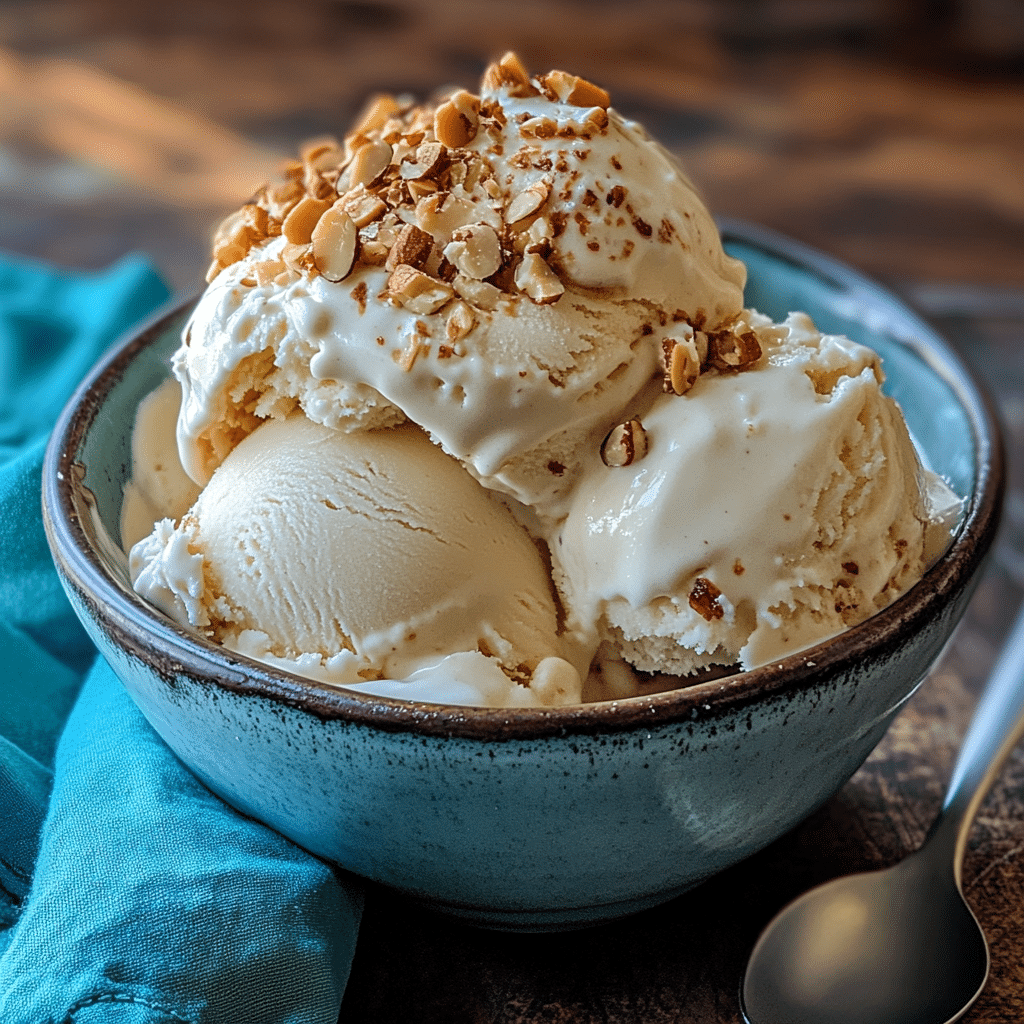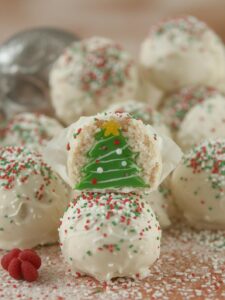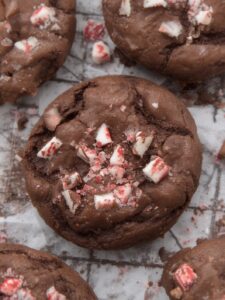If you’re a fan of nutty, earthy, and slightly sweet ice cream flavors, then pinon ice cream might just become your new obsession. Originating from the piñon pine trees native to the American Southwest, this flavor is making waves across gourmet ice cream shops and foodie circles. In this guide, we’ll take you on a full scoop tour—from its rich Native American roots to its rise in modern dessert culture. You’ll learn what piñon ice cream is made of, how it tastes, its health benefits, and even how to make your own batch at home.
Whether you’ve seen it on a travel blog, tried it in a Santa Fe shop, or just stumbled across it while exploring rare flavors, pinon ice cream offers a one-of-a-kind experience you won’t forget. Don’t miss our guide to natural weight-loss drinks if you want something healthy after indulging!
Table of Contents
ToggleThe Origins and History of Piñon Ice Cream
The story behind piñon nuts in Native American and Southwestern cuisine
The roots of piñon nuts run deep through the culinary traditions of Native American tribes like the Navajo, Apache, and Pueblo peoples. For centuries, these nutrient-rich seeds were a staple of the Southwest diet—roasted, ground into flour, or eaten raw. The piñon tree, found in the arid mountains of New Mexico, Arizona, and Utah, was more than just a food source; it was symbolic of survival and community gathering.
As settlers moved west and culinary cultures blended, piñon began showing up in more adventurous recipes. Sweet applications started appearing in pies, candies, and pastries, paving the way for frozen desserts to adopt the rich, nutty ingredient.
How piñon became an ice cream flavor: A historical twist
Pinon ice cream isn’t just a trendy scoop—it’s a nod to heritage. Small-batch ice cream makers in New Mexico were among the first to experiment with piñon in ice cream form, especially as a way to celebrate regional ingredients. Some credit its modern debut to artisan creameries looking to break the vanilla-chocolate-strawberry mold. Others point to the growing food tourism scene in the Southwest, where travelers crave authentic, local flavors.
In the early 2000s, Santa Fe and Albuquerque ice cream shops began serving piñon as a house specialty. Since then, it’s gone from niche to known, appearing in foodie magazines, local food festivals, and even in chef-driven desserts across the U.S.
Discover great ideas like our low-carb recipes to pair with sweet piñon flavors.
Print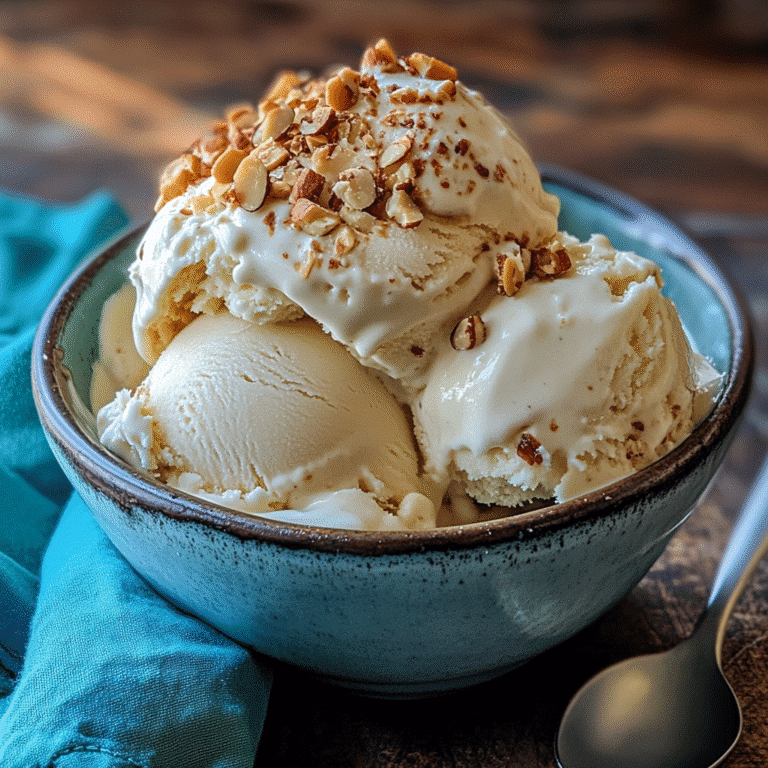
Pinon Ice Cream – The Nutty Southwestern Treat Taking Over America
5 Stars 4 Stars 3 Stars 2 Stars 1 Star
No reviews
Creamy and nutty with earthy tones, Piñon Ice Cream is a Southwestern specialty made from toasted piñon nuts, offering a unique buttery flavor unlike any other.
- Total Time: 5 hours
- Yield: 1 quart 1x
Ingredients
1 cup raw piñon nuts (toasted)
2 cups heavy cream
1 cup whole milk
¾ cup granulated sugar
5 large egg yolks
1 tsp pure vanilla extract
Pinch of sea salt
Instructions
1. Toast the piñon nuts in a dry skillet over medium heat until golden and fragrant, about 5 minutes. Let them cool, then grind ¾ cup into a coarse meal.
2. In a saucepan, combine the milk, cream, and half the sugar. Heat over medium heat until just about to simmer.
3. In a separate bowl, whisk the egg yolks and remaining sugar until pale and creamy.
4. Slowly whisk the warm milk mixture into the yolks to temper them.
5. Return the custard to the saucepan and cook over low heat, stirring constantly, until the mixture thickens enough to coat the back of a spoon.
6. Remove from heat. Stir in vanilla extract, sea salt, and the ground toasted piñon nuts.
7. Let the custard cool completely in the fridge.
8. Churn the mixture in an ice cream maker according to manufacturer’s instructions.
9. Fold in the remaining whole toasted piñon nuts for texture.
10. Freeze the churned ice cream for at least 3–4 hours before serving.
Notes
To deepen the flavor, try drizzling with mesquite honey or adding a swirl of caramel. For a dairy-free version, substitute coconut cream and use maple syrup instead of sugar. Piñon nuts are rich in heart-healthy fats and add a natural buttery richness to the ice cream.
- Author: Jessica Lupone!
- Prep Time: 20 minutes
- Cook Time: 20 minutes
- Category: Dessert
- Method: Churned
- Cuisine: Southwestern
- Diet: Vegetarian
Nutrition
- Serving Size: 1/2 cup
- Calories: 290
- Sugar: 18g
- Sodium: 55mg
- Fat: 24g
- Saturated Fat: 12g
- Unsaturated Fat: 10g
- Trans Fat: 0g
- Carbohydrates: 19g
- Fiber: 1g
- Protein: 5g
- Cholesterol: 150mg
What is Pinon Ice Cream Made Of?
Ingredients that define authentic piñon ice cream
The heart of pinon ice cream is, naturally, the piñon nut. These small, buttery seeds from the piñon pine tree are toasted to bring out their earthy, resinous flavor before being blended into the ice cream base. Unlike peanuts or almonds, piñon nuts carry a richer, almost woodsy depth—one reason they pair beautifully with sweet dairy.
Here’s what you’ll find in a classic piñon ice cream recipe:
| Ingredient | Purpose |
|---|---|
| Toasted piñon nuts | Main flavor, adds texture |
| Heavy cream | Creamy base |
| Whole milk | Lightens the texture |
| Egg yolks (custard base) | Adds richness and stability |
| Sugar | Sweetens the base |
| Vanilla extract | Enhances flavor balance |
| Sea salt | Deepens the nutty profile |
Some artisanal versions include cinnamon or honey to complement the nuttiness, while others incorporate brown butter or caramel swirls for added decadence.
Traditional vs modern piñon ice cream recipes
Traditional recipes lean on simplicity. Think: basic custard, roasted nuts, and minimal additions—much like a French-style nut ice cream. The goal is to let the piñon flavor shine. These are often churned in small batches and served at local New Mexican markets or family-run ice cream shops.
Modern recipes, however, have taken creative turns. Vegan versions swap out dairy for coconut or oat milk, while keto adaptations use sugar alternatives like erythritol and cream cheese to maintain richness. Some gourmet versions even infuse the base with herbs like sage or drizzle the final scoop with mesquite honey.
Artisan brands in cities like Austin and Portland now offer piñon ice cream as part of their seasonal menus—often combining it with smoky or herbal flavor notes to elevate the Southwestern profile.
Check out Detox Island Green Smoothie: The Ultimate Guide if you’re looking for a healthy sip to balance a scoop.
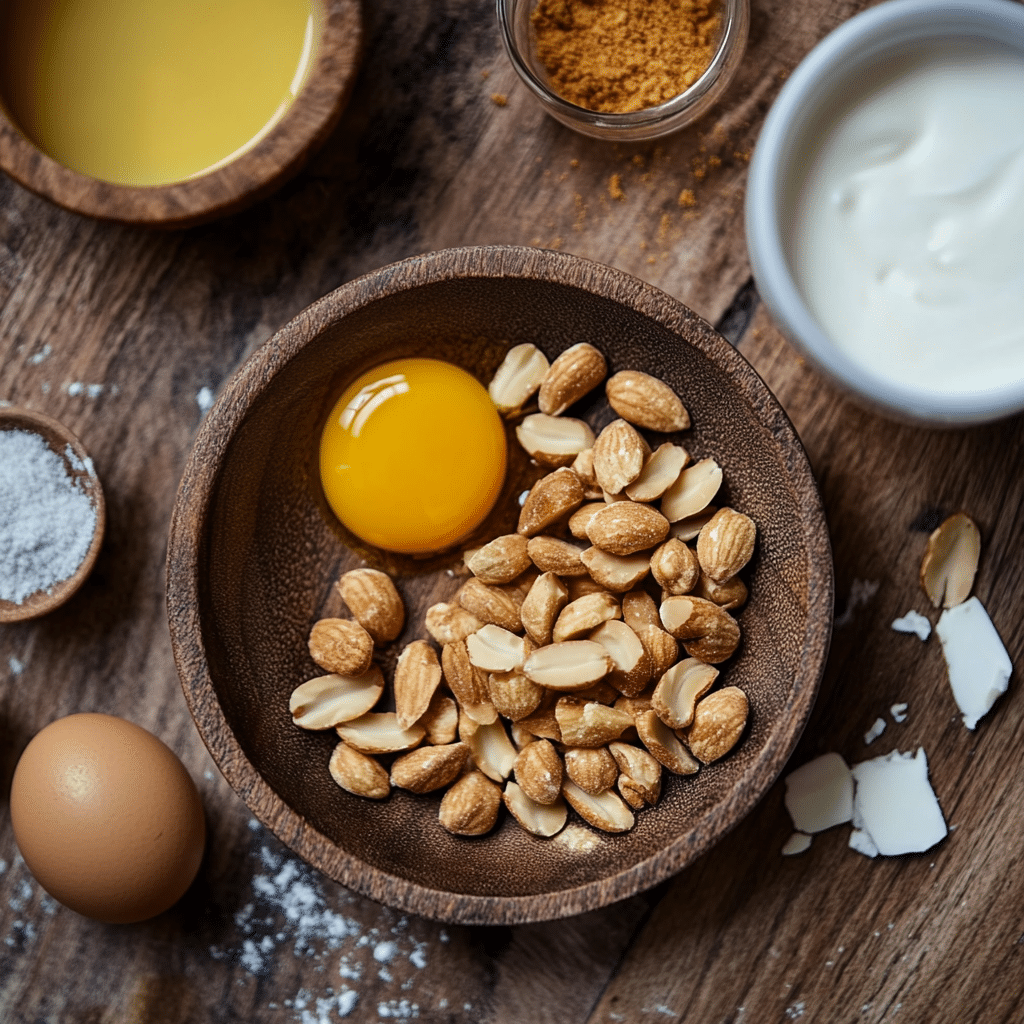
How Does Piñon Ice Cream Taste?
Flavor notes: nutty, earthy, buttery, and sweet
The flavor of pinon ice cream is unlike any other. At first bite, you’re hit with a soft, buttery nuttiness—much like a pine nut, but richer and deeper. As it melts, the complexity unfolds: slightly sweet, mildly earthy, and just a touch resinous. There’s an almost woodsy warmth that reminds you of forest air and roasted seeds.
Many describe the taste as a blend between cashew and macadamia, but with a faint wildness that’s hard to pin down. The cream base enhances the smooth, melt-in-your-mouth texture, giving piñon ice cream a gourmet feel. It’s subtle but captivating—a taste that doesn’t shout, but lingers long after the scoop is gone.
Flavor Profile Breakdown:
| Flavor Note | Description |
|---|---|
| Nutty | Similar to pine nuts or cashews |
| Buttery | Smooth, rich mouthfeel |
| Earthy | Slightly resinous, like tree bark aroma |
| Sweet | Light natural sweetness, not sugary |
| Roasted | Depth from toasted piñon nuts |
Comparing piñon flavor to other nut-based ice creams
Compared to almond, pistachio, or walnut ice creams, piñon stands out for its distinct Southwest character. Pistachio is bright and slightly fruity; almond is sharp and sweet; walnut is bitter and earthy. Piñon, meanwhile, balances them all—nutty, creamy, and just rustic enough to feel artisan.
| Nut Ice Cream | Flavor Notes | Texture |
|---|---|---|
| Almond | Sweet, floral, marzipan-like | Smooth |
| Pistachio | Fresh, mildly sweet, green flavor | Creamy with crunch |
| Walnut | Bitter, deep, earthy | Chunky, dense |
| Piñon | Buttery, roasted, earthy, piney | Velvety, subtle crunch |
The unique thing about piñon flavor is how well it balances with caramel, cinnamon, and honey—common ingredients in Southwest desserts. You’ll often find piñon ice cream paired with chili-dusted chocolate or served in a blue corn waffle cone for an ultra-local twist.
Looking for inspiration? Try our Bariatric Tea benefits guide as a healthy alternative to sugary drinks after dessert.
Nutritional Facts and Health Benefits of Piñon Ice Cream
Nutrient breakdown of piñon nuts
At the core of pinon ice cream’s appeal isn’t just its flavor—it’s the nutritional power of the piñon nut. These little seeds are rich in healthy fats, protein, and essential minerals, making them one of the more nutrient-dense ice cream ingredients out there.
Here’s a typical nutrition profile for 1 oz (28g) of raw piñon nuts:
| Nutrient | Amount | Benefit |
|---|---|---|
| Calories | 190 | Energy boost |
| Protein | 4g | Supports muscle health |
| Total Fat | 19g | Healthy fats for heart and brain |
| Fiber | 2g | Digestive support |
| Magnesium | 71mg | Improves mood and bone health |
| Zinc | 1mg | Immune system support |
| Vitamin E | 2.6mg | Antioxidant protection |
Piñon nuts also contain monounsaturated fats, the same kind found in olive oil and avocados, making them a heart-healthy alternative to processed additives.
Is piñon ice cream healthy or indulgent?
The answer lies in balance. Piñon ice cream, like most ice cream, still contains sugar and dairy—two ingredients that aren’t exactly health foods. However, because it’s made with real, whole-food ingredients like piñon nuts, it’s more nutrient-rich than artificially flavored varieties.
Healthier versions (such as dairy-free or low-sugar) make this dessert more accessible to wellness-focused eaters. Even standard recipes can be enjoyed in moderation, especially compared to mass-produced, additive-heavy ice creams.
Here are tips to enjoy pinon ice cream guilt-free:
- Opt for small-batch brands with minimal ingredients
- Make it at home using coconut milk and natural sweeteners
- Pair it with fresh fruit or sprinkle with chia for fiber boost
- Limit portion size—a scoop goes a long way flavor-wise
Piñon’s nutrient profile gives this ice cream a nutritional edge—but it’s still dessert. As with anything indulgent, it’s best served with a spoonful of mindfulness.
Don’t miss our low-carb recipe collection if you’re looking for lighter treats to balance your sweets.
How to Make Homemade Piñon Ice Cream
Classic at-home recipe: Step-by-step guide
Making homemade pinon ice cream is a rewarding experience that brings the rich, nutty essence of the Southwest right to your kitchen. With just a few quality ingredients and an ice cream maker, you can create a creamy, flavorful treat that rivals any scoop shop.
Here’s a classic custard-style piñon ice cream recipe you can try:
Ingredients:
- 1 cup raw piñon nuts (toasted)
- 2 cups heavy cream
- 1 cup whole milk
- ¾ cup granulated sugar
- 5 large egg yolks
- 1 tsp pure vanilla extract
- Pinch of sea salt
Instructions:
- Toast the piñon nuts in a dry skillet over medium heat until golden and fragrant (about 5 minutes). Set aside to cool, then grind ¾ cup into a coarse meal.
- In a saucepan, combine milk, cream, and half of the sugar. Heat over medium heat until it’s just about to simmer.
- In a separate bowl, whisk egg yolks and remaining sugar until pale.
- Slowly pour the warm milk mixture into the yolks, whisking constantly to temper them.
- Return the custard to the saucepan and cook over low heat, stirring constantly, until thickened enough to coat a spoon.
- Remove from heat. Stir in vanilla, sea salt, and ground toasted piñon.
- Cool the mixture completely, then churn in an ice cream maker according to the manufacturer’s instructions.
- Fold in remaining toasted piñon nuts for texture. Freeze for 3–4 hours before serving.
Result: Smooth, nutty, flavorful ice cream with a unique roasted piñon crunch.
Dairy-free or keto versions for modern diets
Modern eaters rejoice—pinon ice cream can be adapted to fit your dietary needs without sacrificing flavor. Whether you’re dairy-free, keto, or vegan, piñon’s natural richness works beautifully in alternative recipes.
Dairy-Free Piñon Ice Cream (Vegan-Friendly)
Ingredients:
- 2 cups coconut cream
- ½ cup cashew milk
- ¾ cup maple syrup or agave
- ¾ cup toasted piñon nuts (ground)
- 1 tsp vanilla extract
- Pinch of salt
Just blend everything until smooth, churn in an ice cream maker, and freeze.
Keto Piñon Ice Cream
Swap Tips:
- Use heavy cream + almond milk as the base
- Sweeten with erythritol or monk fruit
- Add cream cheese for a richer body
- Toasted piñon gives great fat and texture
Bonus tip: Add a swirl of sugar-free caramel or a sprinkle of cinnamon for an extra gourmet keto twist.
Don’t miss our resource on Keto & Low-Carb recipes to help plan healthy desserts and meals.
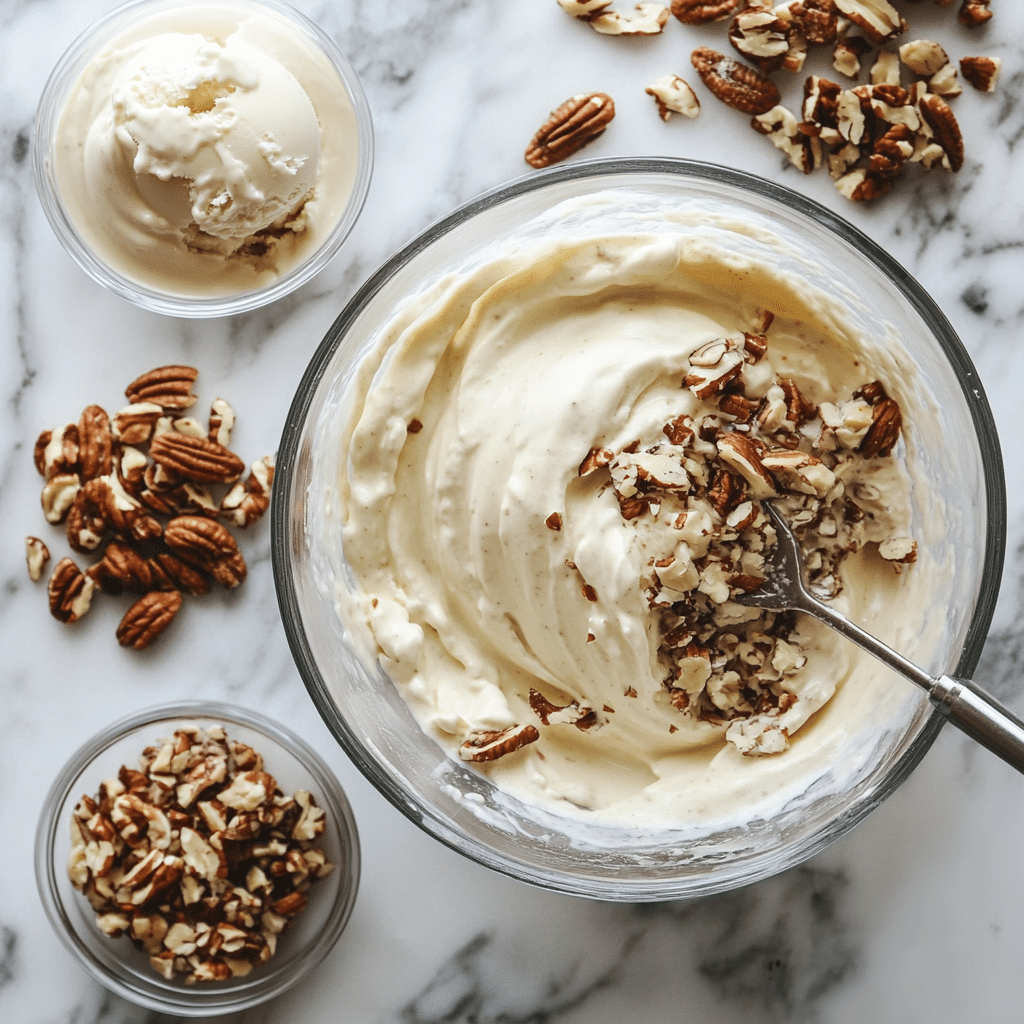
Rare Ice Cream Flavors That Compete with Piñon
Top 5 rarest ice cream flavors in the U.S.
While pinon ice cream is unique to the American Southwest, it’s not the only rare scoop making waves. Across the U.S., gourmet and artisan creameries are experimenting with bold, unconventional flavors that go far beyond chocolate and vanilla.
Here are five of the rarest (and most intriguing) ice cream flavors you can find in the U.S.:
| Flavor | Region or Origin | Flavor Profile |
|---|---|---|
| Pinon Ice Cream | New Mexico / Southwest | Nutty, earthy, buttery, slightly sweet |
| Sweet Corn and Black Pepper | Midwest / Gourmet chefs | Creamy, spicy, slightly savory |
| Foie Gras Ice Cream | NYC / High-end restaurants | Rich, umami, luxurious, fatty |
| Ghost Pepper Chocolate | Texas / Artisan makers | Sweet with fiery heat, intense |
| Lobster Ice Cream | Maine / Coastal towns | Salty, creamy, buttery seafood flavor |
Each of these flavors reflects a regional pride or culinary experiment that pushes the boundaries of what ice cream can be. Still, piñon stands out not just for its rarity, but for its connection to indigenous history and natural Southwest roots.
How piñon compares on uniqueness and taste
When it comes to both uniqueness and mass appeal, piñon ice cream strikes a rare balance. Unlike foie gras or lobster—which may intrigue but don’t appeal to most palates—piñon has a gentle, familiar quality that makes it both exotic and comforting.
Here’s a comparison of piñon vs other rare flavors:
| Feature | Pinon Ice Cream | Other Rare Flavors |
|---|---|---|
| Nutritious Ingredients | ✅ Piñon nuts, healthy fats | ❌ Often high-fat or gimmicky |
| Accessibility | ✅ Sold regionally, online | ❌ Limited to select shops/restaurants |
| Crowd-pleasing | ✅ Buttery, nutty, subtle | ❌ Often an acquired taste |
| Cultural relevance | ✅ Deep Native American/Southwest roots | ❌ Mostly experimental |
Pinon flavor is versatile. It can be spun into a trendy artisanal dessert or stay simple and classic. It pairs well with traditional toppings (like honey or cinnamon) or bold new fusions (chili, blue corn, even tequila caramel).
Unlike shock flavors, piñon doesn’t just aim to surprise—it invites you into a story.
Creative Pairings and Serving Ideas for Piñon Ice Cream
Best toppings and sauces for piñon ice cream
While pinon ice cream has a unique flavor that stands beautifully on its own, pairing it with complementary toppings and sauces can turn a single scoop into a gourmet experience. Its nutty, earthy profile welcomes both sweet and savory enhancements.
Here are top toppings and sauces that elevate piñon ice cream:
| Topping/Sauce | Why It Works |
|---|---|
| Mesquite honey drizzle | Adds smoky sweetness that complements piñon flavor |
| Caramel sauce | Balances the nuttiness with buttery richness |
| Cinnamon-dusted pecans | Enhances warm, spiced notes |
| Chili chocolate shavings | Adds heat and depth—great for adventurous eaters |
| Blue corn cookie crumbles | Brings regional texture and color |
| Sea salt flakes | Elevates every bite with contrast |
For a visually appealing presentation, serve the ice cream in a toasted waffle bowl, then layer toppings with intention. Piñon pairs especially well with earth-toned garnishes like roasted seeds, edible flowers, or even pomegranate arils for a pop of color.
How to serve it in desserts, shakes, and beyond
Pinon ice cream is more than a scoop-on-a-cone treat—it can become the highlight of show-stopping desserts or creative milkshakes. Its balanced flavor profile allows it to blend seamlessly into many formats.
Here are delicious ways to serve piñon ice cream:
- Southwest Sundae: Layer piñon ice cream with chile-chocolate sauce, honey, and blue corn flakes.
- Ice Cream Sandwich: Use snickerdoodle or brown butter cookies to hug the scoop.
- Piñon Milkshake: Blend with almond milk, banana, and a spoonful of peanut butter for an earthy shake.
- Affogato Twist: Pour a shot of Mexican coffee over piñon ice cream for a nutty caffeine hit.
- Frozen Pie: Spread softened pinon ice cream in a graham cracker crust, freeze, then top with whipped cream and chopped nuts.
You can even integrate piñon into a brunch setting. Scoop it over warm pancakes or mix a small serving into a breakfast smoothie bowl topped with seeds and berries.
Whether you’re planning a fancy dinner party or a summer afternoon treat, pinon ice cream offers endless pairing potential that never overwhelms and always delights.
Don’t miss our guide to Detox Smoothies if you’re looking to cleanse after dessert-heavy weekends.
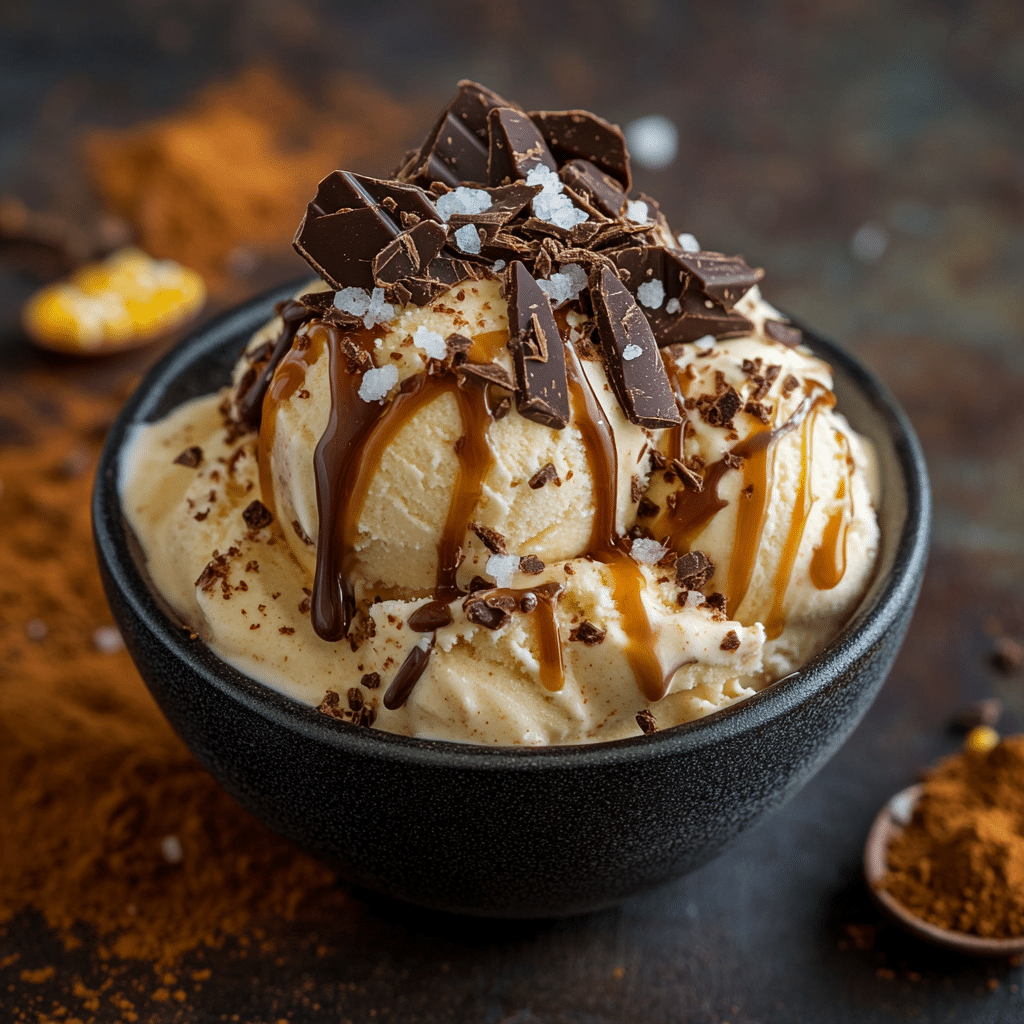
Conclusion: Why Piñon Ice Cream Deserves a Spot in Your Freezer
If you’re looking for a dessert that’s both comforting and culturally rich, pinon ice cream delivers a scoop of history with every bite. From its deep Native American roots to its growing popularity in gourmet circles, piñon is more than just a nut—it’s a symbol of the American Southwest and the new wave of artisan ice cream.
Its flavor is subtle yet complex, earthy yet sweet, and always memorable. Whether you’re making it at home, seeking it out on a road trip, or ordering from a boutique creamery online, piñon ice cream offers a truly unique culinary experience. It bridges old-world ingredients with modern creativity in a way few other desserts can.
So next time you’re ready to break from the vanilla rut, give this regional gem a try—you might just find your new favorite flavor.
For more recipes Follow me in our Social media
Facebook: https://www.facebook.com/profile.php?id=61573913076847
Pinterest: https://www.pinterest.com/momandgrandmacooks/
Medium: https://medium.com/@momandgrandmacooks
FAQ About Pinon Ice Cream
What is the difference between pine and piñon?
While both come from coniferous trees, pine nuts and piñon nuts aren’t exactly the same. “Pine” is a broad category that includes many species around the world. Piñon (or pinyon) refers specifically to pine trees native to the American Southwest, particularly Pinus edulis. These produce smaller, more flavorful nuts compared to other pine varieties.
In short:
Pine nut = General term (often imported from China or Europe)
Piñon nut = Specific to the American Southwest, known for its rich, buttery flavor
This difference matters in pinon ice cream, as only authentic piñon delivers that signature earthy, resinous profile.
What is piñon flavor?
Piñon flavor is complex yet subtle. It’s:
Nutty
Buttery
Slightly earthy
Hints of pine or woodsy aroma
Unlike stronger nuts like walnut or almond, piñon’s flavor is smooth and mellow. When blended into ice cream, it gives a creamy, roasted richness that’s comforting and unique.
What is the rarest ice cream flavor?
That depends on where you’re asking—but pinon ice cream ranks high on the list of rare American flavors. Other contenders include:
Foie gras
Lobster
Ghost pepper chocolate
Wasabi
Garlic vanilla
Piñon stands out because it’s both rare and approachable—offering a gourmet experience without being polarizing or gimmicky.
What flavor is piñon?
The flavor of piñon is buttery, smooth, and nut-forward. Think of it as a cross between cashew, macadamia, and a touch of pine. It’s mild yet aromatic, with a richness that makes it perfect for both sweet and savory recipes—including the decadent world of pinon ice cream.

